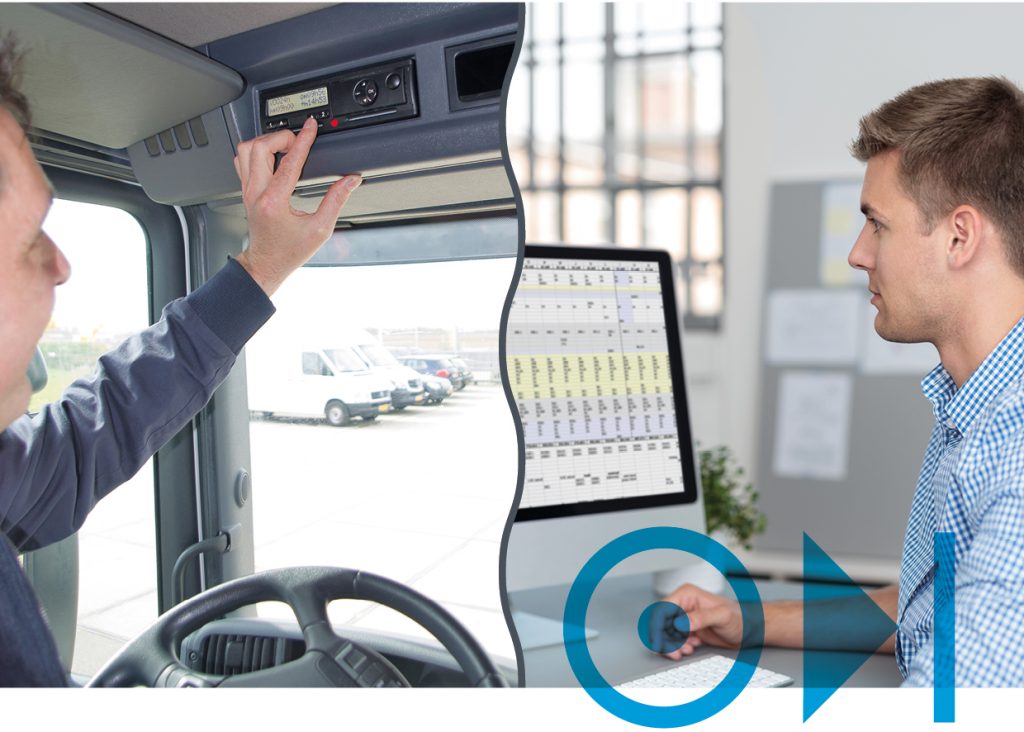Tacho Remaining Driving Times is an addition to our Remote Tacho Download solution. The uncalculated actual data acquired from the tachograph is, besides shown on the truck’s dashboard, also available on the manager’s device at the back office. This makes planning more reliable and efficient.
Tacho Remaining Driving Times and all our tacho related solutions are supported in VDO Counter digital tachographs since version 2.0a and Stoneridge DDS. For details, see below:
The following tachographs are supported by Squarell:
VDO Counter
VDO 2.0a (2012 & 2013)
VDO 2.1 (2013 & 2014): needs to be activated
VDO 2.2 and higher (2015+)
VDO 4.0 (2018+)
Stoneridge DDS
Stoneridge Exakt Duo 7.4 (2012 & 2013 & 2014)
Stoneridge Exakt Duo 7.5 (2014+)
With VDO Counter, all drivers are able to plan their driving and rest times more efficiently. With one glance at the VDO display, you know immediately the remaining driving times and the duration of the next rest period. You can easily see the maximum driving time after each rest period and also the remaining driving times for that day or the week.
Squarell implementation
Squarell can extract the remaining driving time parameters from the digital tachograph. The extraction can be done on the remote download CAN bus from the tachograph located on the back of the tachograph.
Customers that already have the Remote Tacho Download RTD firmware, can easily upgrade to this new functionality. Customers that do not have tacho download, first need to connect the Squarell device REMOTE or BE to the digital tachograph. To activate the RDT in the REMOTE, a special profile is needed, for the BE an application must be downloaded. Of course also a wired connection needs to be made to the CAN bus of the Tachograph.
The parameters supported by the new RDT functionality are:
- Total Time Of The Current Work State
- Total Drive Time Of The Current + The Previous Week
- Remaining Drive Time Of The Current/Next Period
- Remaining Time Before The Next Break (only VDO)
- Time The Next Break Should Be (only VDO)
- Remaining Time Of The Current Break (only VDO and Stoneridge 7.5 and higher)
- Remaining Time Before The Next Drive Period (only VDO)
- Duration Next Drive Period
- Remaining Daily Drive Time
- Remaining Time Before The Next Daily Break
- Time The Next Daily Break Should Be
- Remaining Drive Time Of This Week
- Remaining Time Before the Next Weekly Break
- Time The Next Weekly Break Should Be
- Compensation Time Of The Previous Week (only VDO)
- Compensation Time Of The 2nd Previous Week (only VDO)
- Compensation Time Of The 3rd Previous Week (only VDO)
- Remaining Daily Extended Drive Time Periods
- Remaining Daily shortened Rest time Periods
Why do I need Tacho Remaining Driving Times?
The remaining driving times can be manually calculated by monitoring the real-time data coming out of the tachograph. Research has proven that even the best routines calculating these times are a few minutes off in the best scenarios. But when the monitoring device is disconnected, powered down or when the driver manually adds an entry when he enters his Driver Card, great differences can occur between the calculated values and the real values that are shown on the screen of the tachograph.

Uncalculated data is never wrong
The Squarell Tacho Driving Times are never wrong because they come directly from the tachograph. It is plug and play because the data can be immediately retrieved from the tachograph and does not have to be calculated (when it is calculated, the two-week history is unknown and therefore, calculated data needs a startup time of two weeks). Another advantage is, there is no incorrect data when the REMOTE or BE gets disconnected or when the driver manually adds an entry. And finally, the data Squarell presents is the same as the data displayed on the tachograph and the data the driver is seeing.
Request info about our Tachograph solutions
Contact our account manager for details and prices

